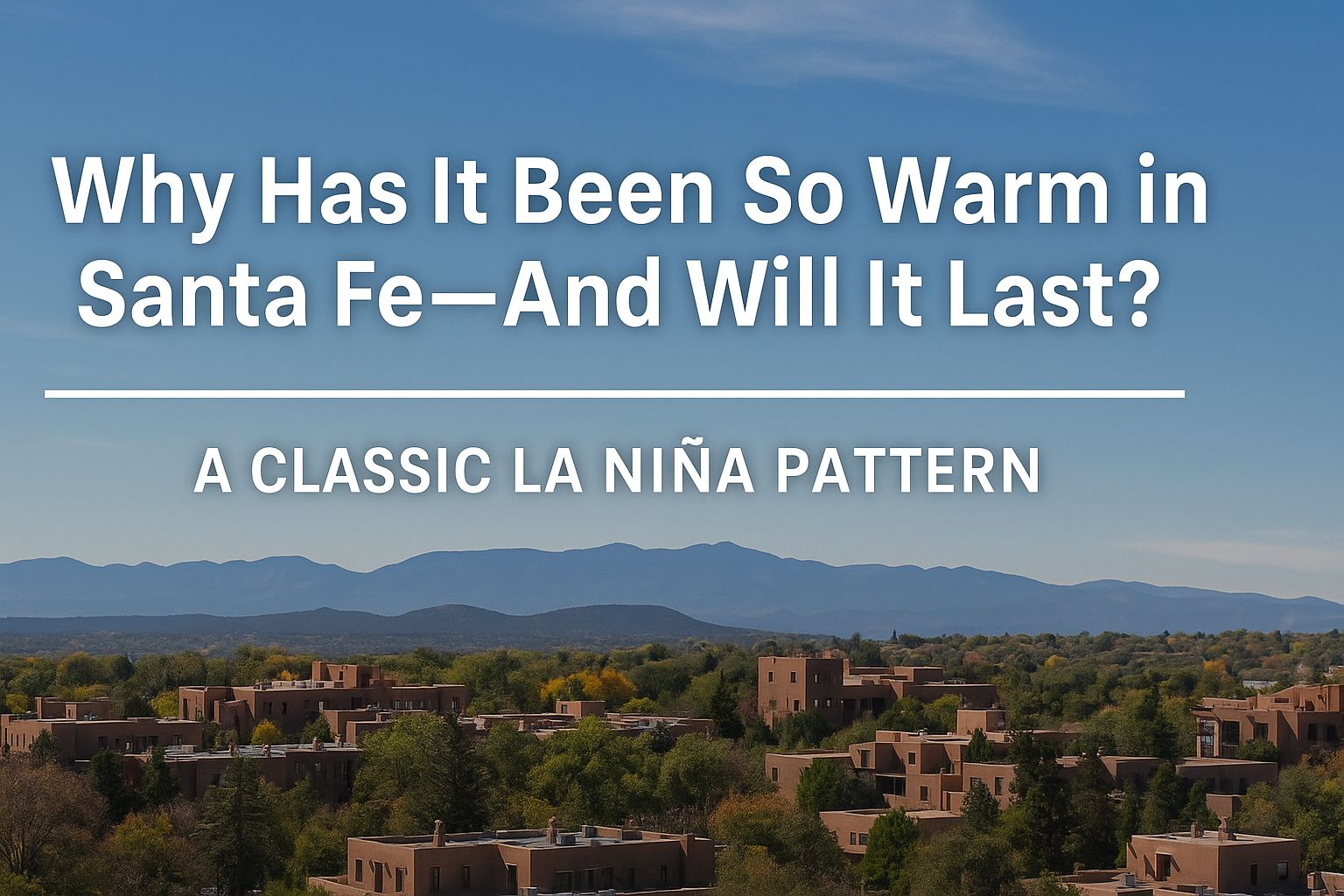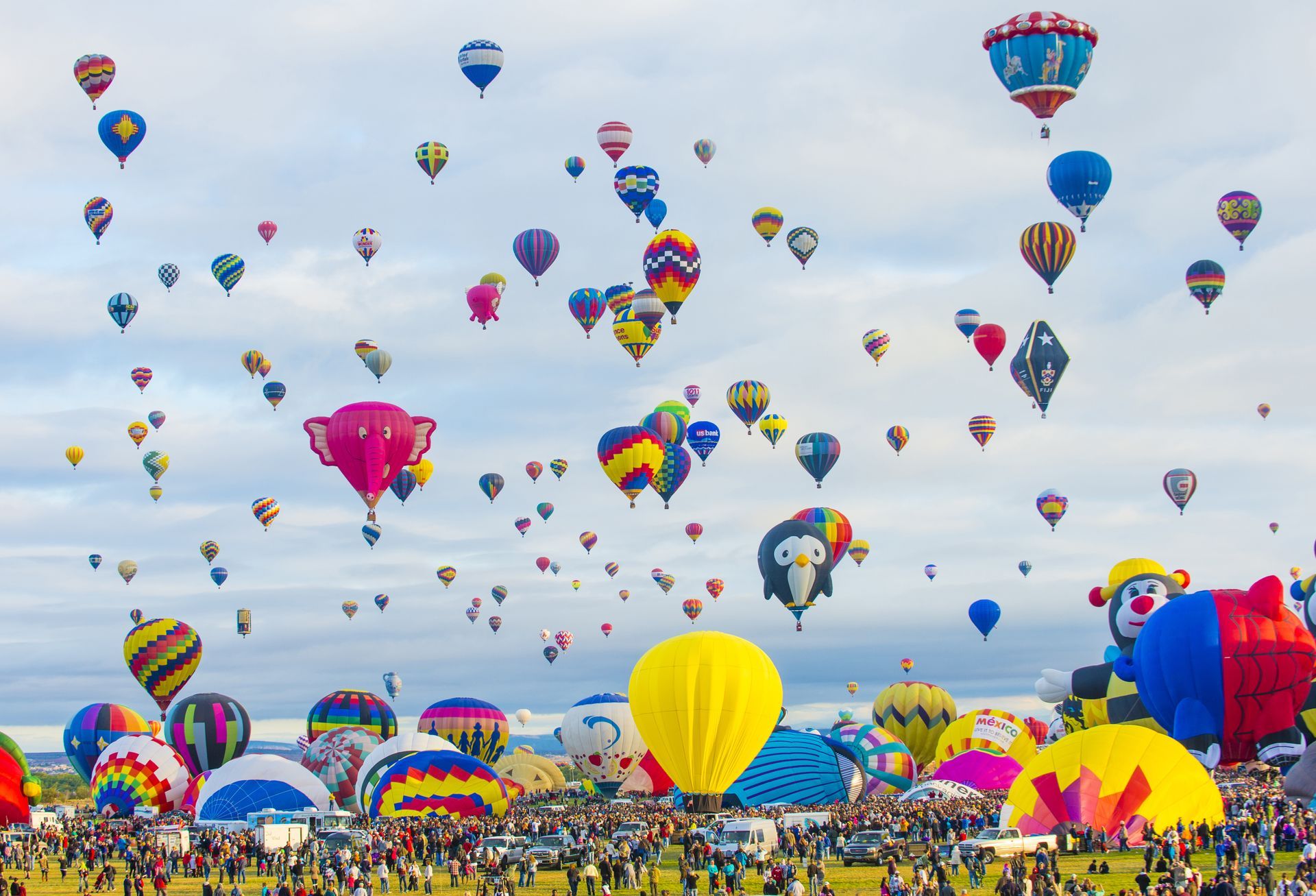With it being so hot out this week, I can't think of a better time to talk about a winter snowfall forecast.
Winter Snowfall Forecast (2025-2026)
August 5, 2025
By Jay Faught
Winter Snowfall Forecast for Los Alamos (and What It Means for Santa Fe)
When it comes to predicting snowfall for northern New Mexico, reliable historical data is essential. Unfortunately, Santa Fe’s snowfall records are patchy and inconsistent over the years, which makes it difficult to use them as a solid forecasting base. That’s why I turned to Los Alamos—just 30 miles away and about 1,000 feet higher—for my winter snowfall analysis.
Los Alamos benefits from decades of well-kept snowfall records and sits in a location where winter weather patterns are often a good proxy for Santa Fe’s trends. While Los Alamos typically receives more snow due to its elevation—an annual average of 42.2 inches compared to Santa Fe’s 22 inches—both communities are influenced by the same large-scale weather patterns.
Looking at the Numbers
I examined Los Alamos snowfall data going back more than 70 years, categorized by ENSO phase (El Niño, La Niña, or Neutral). The upcoming winter is forecast to be a very weak La Niña or ENSO-neutral, meaning the Pacific Ocean will not be strongly tilted toward warm (El Niño) or cool (La Niña) conditions.
Historically, Neutral winters in Los Alamos average 51.2 inches of snow—about 9 inches above the long-term normal. If the same pattern holds, Los Alamos could be in for a near-normal to slightly above-normal snow season, likely landing somewhere between 45 and 55 inches by spring.
What This Means for Santa Fe
Because Santa Fe sits lower in elevation, it normally receives about half as much snow as Los Alamos. While the raw snowfall totals won’t match, the trend will. If Los Alamos sees near-normal or slightly above-normal snow this winter, Santa Fe should experience the same relative outcome. That means residents can expect around 20–23 inches of snow for the season, which is close to the city’s long-term average of 22 inches.
Factors That Could Shift the Forecast
While ENSO is a major driver of winter precipitation patterns, it’s not the only one. Other climate signals—like the Pacific Decadal Oscillation, Arctic Oscillation, and random atmospheric patterns—can swing snowfall totals significantly in either direction. Temperature trends will also matter, since warmer storms can produce more rain than snow even in the winter months.
Final Word
Based on historical trends for Neutral ENSO winters, Los Alamos is likely looking at a snow season in the near-normal to slightly above-normal range. For Santa Fe, that means around 20–23 inches of snow by spring.
So keep your snow shovels handy, but don’t expect a record-breaking year—this winter should feel pretty typical for northern New Mexico.
Santa Fe Weather

Why Has It Been So Warm in Santa Fe - and Will it Last? If you’ve been enjoying the mild afternoons lately, you’re not imagining things. Santa Fe has been running unseasonably warm for much of December, with daytime highs frequently climbing well above normal and very little in the way of cold air or snow. It’s a pattern that has raised plenty of questions — especially with Christmas just around the corner. So what’s going on, and should we expect a change anytime soon? A Classic La Niña Pattern The warmth we’re experiencing is very typical of a La Niña winter, particularly early in the season. During La Niña, cooler-than-normal waters in the equatorial Pacific tend to shift the jet stream farther north. For New Mexico, that often means: Fewer storms tracking through the Southwest More frequent ridging (high pressure) over the region Warmer daytime temperatures Longer dry stretches between storms In Santa Fe, La Niña winters often start slow, especially when it comes to snowfall. Cold air struggles to push this far south, and storm systems that might normally bring snow either weaken or pass well to our north. Will This Warm Pattern Last Through Christmas? This is the question I’m hearing most right now — and based on current data, yes, the pattern looks likely to hold through Christmas and probably through the end of the year. Forecast models continue to show persistent high pressure nearby, limited storm activity, and temperatures staying above normal for late December. That doesn’t mean we can’t sneak in a brief cool-down or a weak system, but at this point it does mean there’s no clear signal for a sustained cold or snowy pattern before the calendar flips to January. In other words, if you’re hoping for a white Christmas in Santa Fe, the odds aren’t looking great this year. Mild afternoons, chilly nights, and generally dry conditions remain the most likely outcome through the holiday period. Does That Mean the Rest of Winter Is a Bust? Not necessarily — and this is where things get more interesting. While La Niña is currently influencing our weather, longer-range climate guidance continues to suggest that this event may weaken as we move deeper into winter. Several climate models are still pointing toward a transition out of La Niña and into an ENSO-neutral pattern later in the season. That matters because ENSO-neutral winters can open the door to a very different setup for New Mexico. What Happens If We Shift to ENSO Neutral? If La Niña fades and we move into neutral conditions, the jet stream often becomes more variable and less locked into one position. For Santa Fe, that can mean: More frequent storm systems reaching the Southwest Better opportunities for colder air to move south An increased chance for snow-producing systems More active weather during the second half of winter Historically, some of our better snow seasons in northern New Mexico have featured slow starts followed by a more active late winter. February and even early March can end up doing a lot of the heavy lifting when it comes to seasonal snowfall totals. The Bottom Line The recent warmth is not unusual for a La Niña winter, especially in December Current trends suggest mild and mostly dry weather through Christmas and the end of the year There are credible signs that La Niña may weaken later this winter If we transition to ENSO-neutral conditions, colder and potentially snowier weather could arrive during the second half of winter So while it may feel more like fall or spring than winter right now, winter isn’t over by a long shot (technically, it hasn't even started). Santa Fe winters have a habit of saving some surprises for later — and I’ll be watching closely to see if that late-season pattern shift begins to show up in the weeks ahead. Stay tuned.

Updated Storm Track for Weekend Storm November 14, 2025 By Jay Faught The storm system we’ve been watching all week has shifted—but this time, it’s slowing down and taking a more northerly route. That updated path dramatically changes the weekend forecast for Santa Fe and northern New Mexico. A Slower, More Northern Storm Track Earlier projections had the storm sweeping into New Mexico sooner, with a more organized band of moisture. But the latest data shows the system digging more slowly along the West Coast and pushing a bit farther north than originally expected. That shift means Southern California will now take the brunt of the storm, with periods of heavy rain and even flooding concerns in some areas. For us in Santa Fe, however, the impacts will be much more limited. Santa Fe’s Updated Forecast: Light and Late Instead of showers developing Saturday or early Sunday, the latest timing suggests isolated light rain showers won’t arrive until Sunday night. The moisture feed simply doesn’t extend far enough south to bring widespread precipitation to our area. Here’s what that means for your weekend plans: Most of the weekend stays dry—great news if you're planning outdoor activities around town or on the trails. Isolated showers Sunday night may bring brief dampness but nothing widespread or soaking. Snow Levels: Staying High There will be just enough moisture and lift Sunday night into early Monday for a few flakes in the higher terrain: Light snow is possible above 9,000 feet, mainly over the highest peaks of the Sangre de Cristo Mountains. Accumulations look minimal, and ski areas won’t see major impacts, though the first hints of winter are always exciting. Valleys, including Santa Fe, will stay warm enough for just light rain if anything at all. Bottom Line While this storm is impressive for the West Coast, its slower and more northern track means Santa Fe will see only minor impacts—mostly a few isolated showers Sunday night and perhaps a dusting of snow high in the mountains. A bigger takeaway: this pattern shift still hints at an active atmosphere as we move deeper into November. It’s a good reminder that our storm season is just getting started.









